Threads of Banni: The Enduring Spirit of Kutch’s Women Artisans
The dust of the desert swirled as our cab lurched to a halt, a splash of vibrant hues against the
stark landscape. It wasn’t a planned stop, as we were on our way to Khavda district, but I saw a
roadside shop, a vibrant space in the vast, arid landscape. An old man, turbaned and clad in
traditional “kurta” and “dhoti”, welcomed us with a warm smile, quickly followed by Govind
Marvada, a young man whose enthusiasm for his craft was infectious. Bedcovers, dupattas,
shawls – each piece a testament to the intricate artistry of the region. What happened next was
even more interesting..
Threads of Resilience: The Story of The Women of Banni
I didn’t know it then, but I’d stumbled into Banni Village, a place where threads are more than
just fibers; they’re stories, whispered through generations. The urge to meet the women who
created these wonders was irresistible. I was then led to a cluster of “Bhungas”, round houses
painted with whimsical elephants and camels. Inside, the magic truly began. Women, their faces
hidden behind ghunghats, their attire a riot of embroidered patterns, welcomed us with a quiet
grace.
Banni, a region within Kutch, is home to diverse tribes, each with its unique embroidery style.
Rabari community is one of those tribes. The Rabari community, residing in the Kutch, are
believed to have migrated from Afghanistan, traversing Baluchistan, centuries ago. Traditionally
nomadic pastoralists, the term “Rabari” translates to “outsiders.” Despite this designation, they
have established a significant presence in Kutch now.
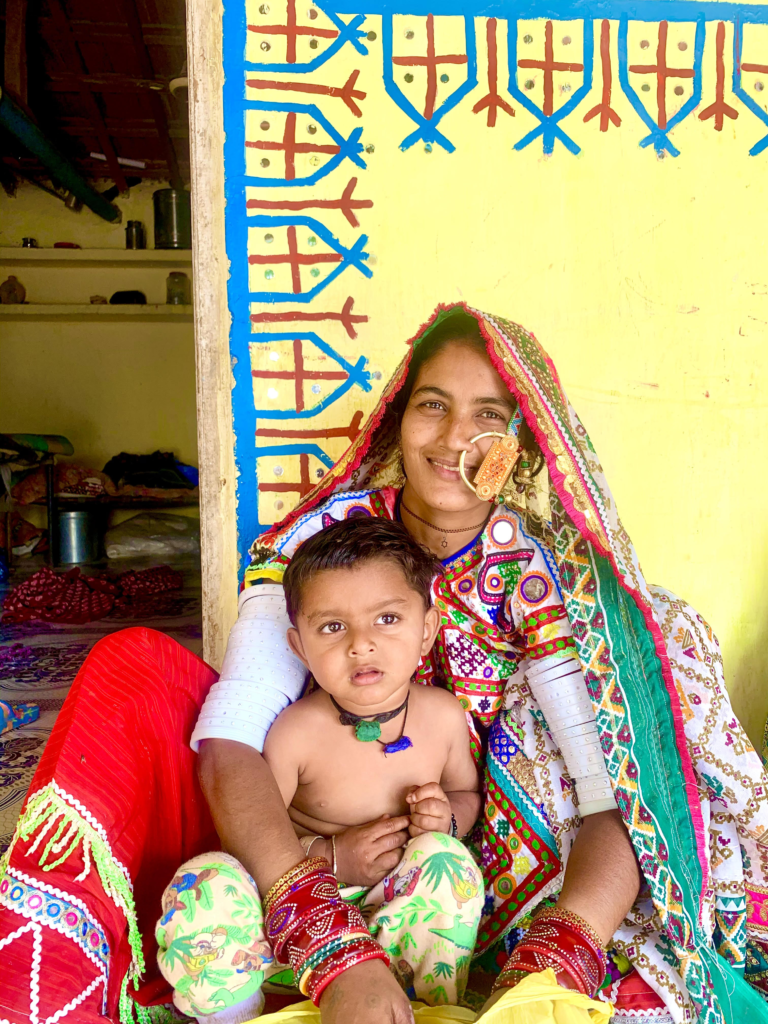
Their lifestyle is characterized by seasonal migration, with approximately eight months of the
year spent relocating in pursuit of rainfall. The Rabari society exhibits a matriarchal structure,
wherein women manage a substantial portion of community affairs, while men primarily engage
in cattle and camel herding.
One interesting aspect of this community is how they dress; their attire distinguishes the gender
roles: women typically wear black garments, and men wear white. Married women’s blouses are
known for their pleated design. The practice of women wearing black is often attributed to a
tradition of mourning for Lord Krishna.
The Rabari are skilled artisans, practicing intricate embroidery techniques. Their design motifs
draw inspiration from mythological narratives and the surrounding natural environment and
Banni embroidery is known for its detailed designs, bright colors, and careful stitching. It shows
the rich culture of the area and how history and nature have shaped it.
The designs use flowers, geometric shapes, and animals like scorpions and peacocks. A
special feature is the use of small mirrors, “abhla,” which adds sparkle. This craft is used in
many ways, including embroidery, patchwork, and appliqué. This variety shows how Banni
embroidery has changed over time due to different cultures and local adaptations.
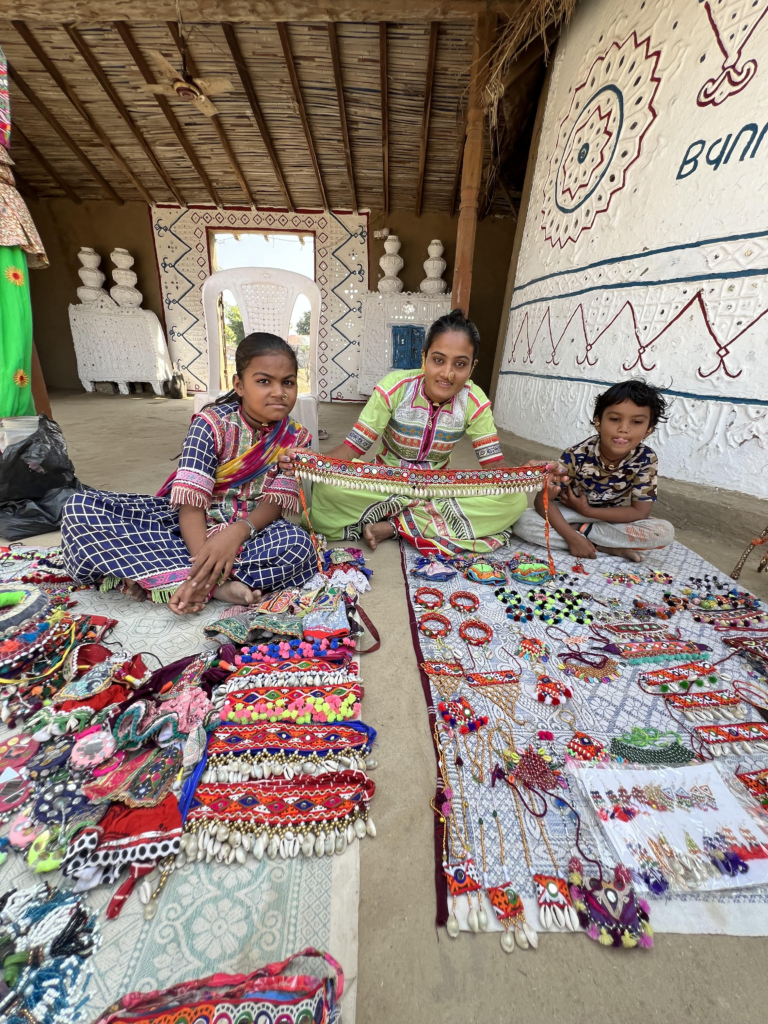
Among all these stories of their rich culture, the story that intrigued me the most was the story of
the Rabari women. The women, despite their quiet demeanour, possessed an undeniable
strength, a silent power woven into their creations. They spoke of their lives through their art, of
the harshness of the desert and the beauty they found within it. The intricate details of their
embroidery weren’t just decorative; they were a language, a visual narrative of their history and
beliefs.
The motifs, passed down from mother to daughter, told stories of ancestral journeys, of sacred
symbols, and of the natural world that surrounded them. Their embroidery, once a symbol of
dowry, a way to delay marriages, was now banned for personal use. A poignant reminder of
how traditions, meant to bind, can sometimes constrain.
Weaving Stories, Preserving Heritage: Our Goal
Even though my stay was impromptu, I decided to revisit them the next day and I cherished
every second I spent with these resilient women. At first the women were shy, however, soon a
bunch of them gathered around to show me their art. I was touched by their stories and their
dedication towards preserving their culture.
And here’s something that struck me: while trying to tell them how they can further sell their
pieces digitally, these women, creators of such intricate beauty,told me they do not own or use
phones. They exist far from the digital mayhem that defines so much of our world, and,
beautifully, they don’t seem to miss it at all. They say, “What are we going to do with phones?”.
Their world is rich with the rhythm of their craft and the strength of their community
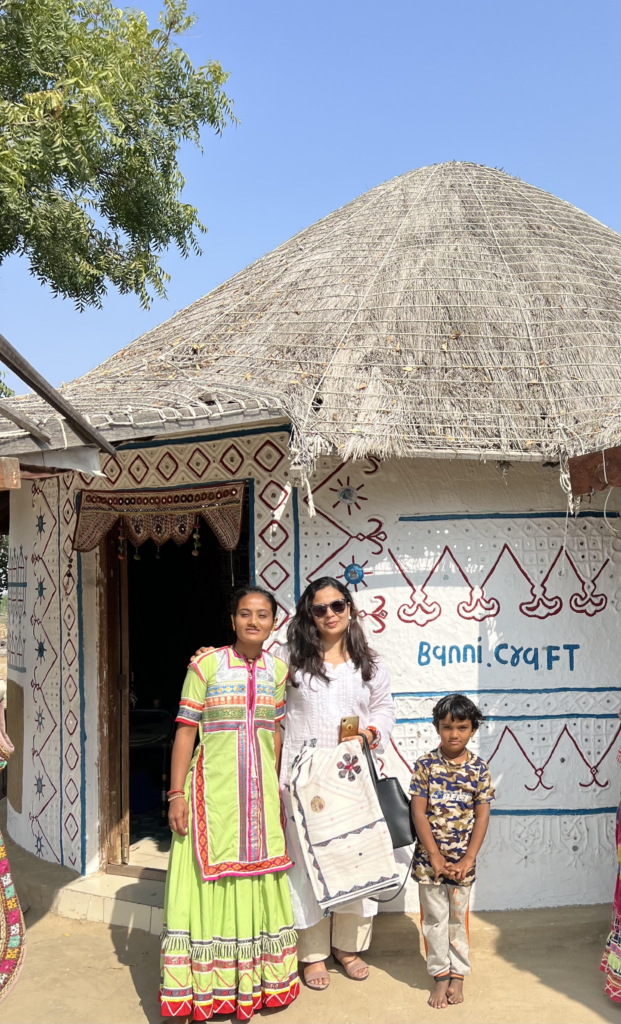
However, while historically adhering to traditional gender roles, the community is presently
undergoing a noticeable shift in perspective regarding women’s participation in commercial
ventures. The women create the vibrant handcrafted textiles and the men market them to a
wider audience.
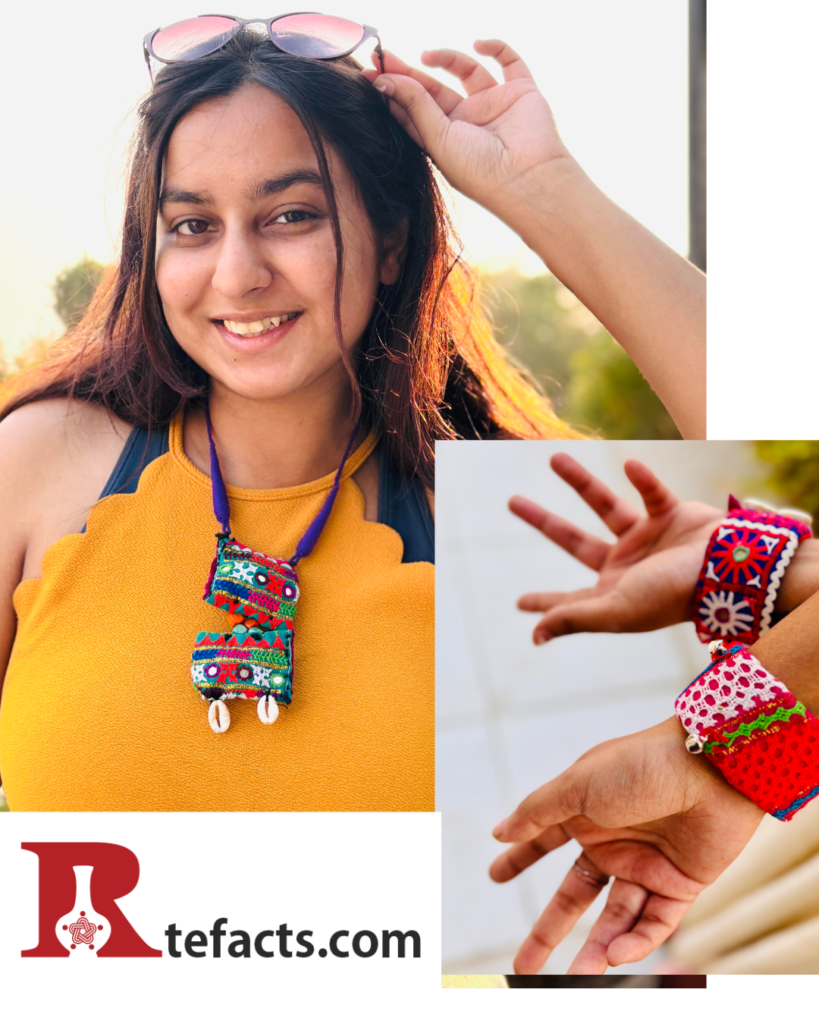
Leaving Banni, I carried more than just handcrafted textiles; I carried a profound respect for
these women and their enduring spirit. Their art was a testament to their resilience, their ability
to find beauty in adversity. It was a reminder that true artistry lies not just in skill, but in the heart
and soul poured into each creation.
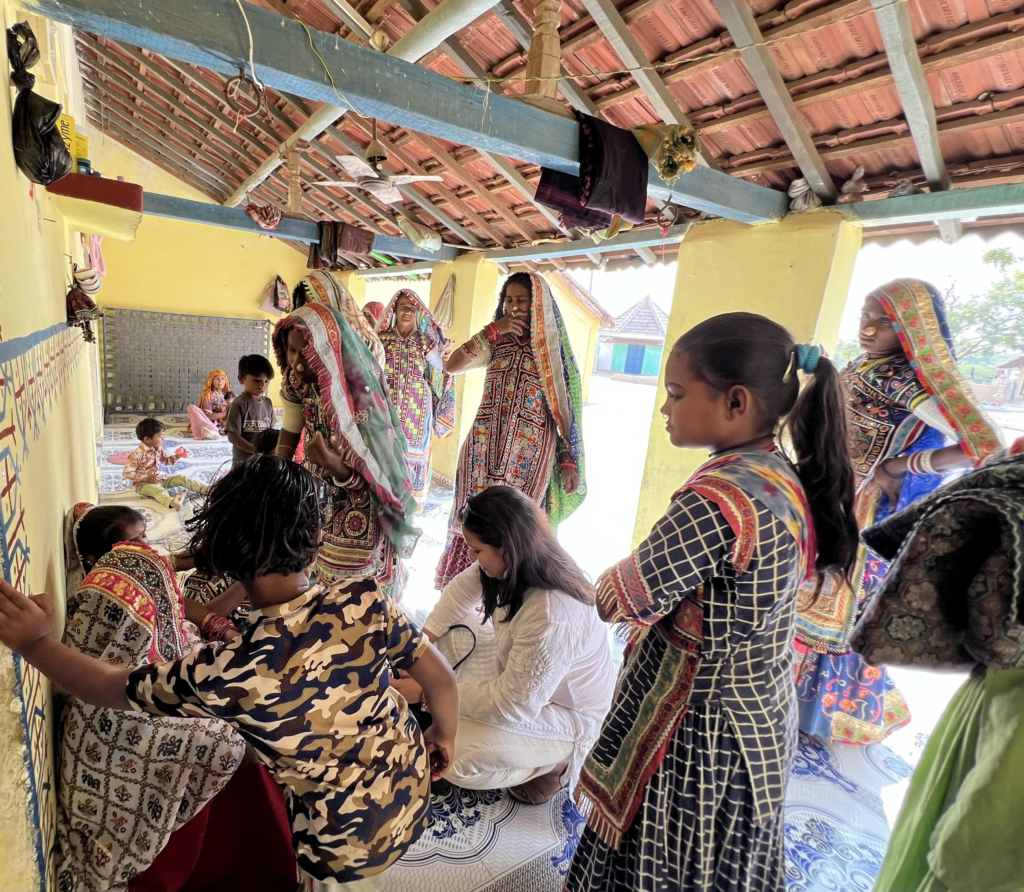
Rtefacts believes in the R’evival of Rabari artistry, providing a platform for these women to
share their stories and skills with the world. By purchasing their handcrafted pieces, you’re not
just acquiring a beautiful handcrafted product; you’re investing in their empowerment, ensuring
their voices, though often soft, resonate for generations. You’re helping to ensure that the
vibrant colours of Banni continue to shine, that the threads of their stories are not lost.
So, let’s ensure that the R’evival of art is not just a concept but a reality.

Leave a Reply